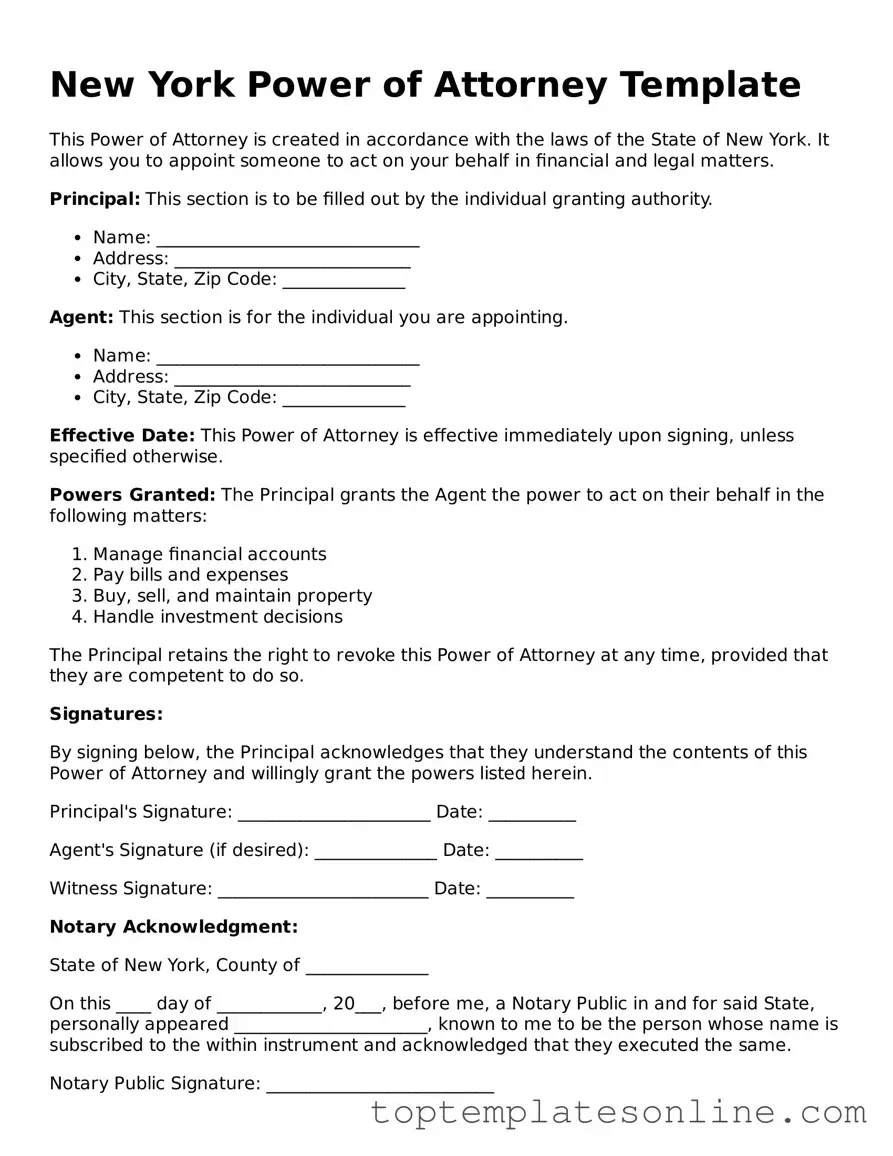When it comes to managing your financial and legal affairs, having a reliable Power of Attorney (POA) in place can make a significant difference. In New York, this important document allows you to appoint someone you trust to act on your behalf in various situations, whether it’s handling your finances, making healthcare decisions, or managing property matters. The New York Power of Attorney form is designed to be straightforward, ensuring that your chosen agent can make decisions that align with your wishes. This form encompasses several key elements, including the designation of your agent, the specific powers granted, and any limitations you wish to impose. It’s important to note that the POA can be tailored to your needs, allowing for broad or limited authority depending on your preferences. Additionally, understanding the legal requirements for executing this document, such as the need for witnesses and notarization, is crucial to ensure its validity. As you navigate the intricacies of this form, you’ll find that it serves as a vital tool for safeguarding your interests and ensuring that your affairs are managed according to your wishes, even when you may not be able to do so yourself.
